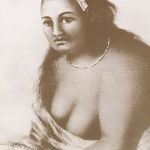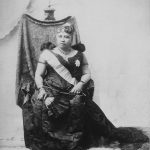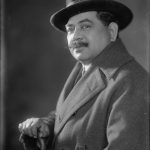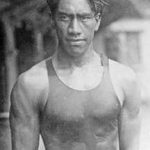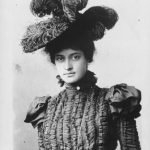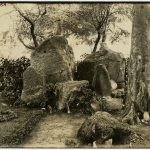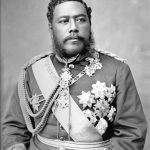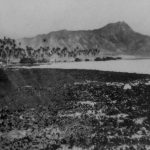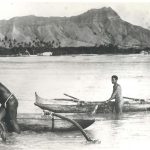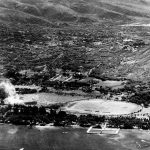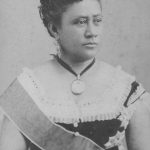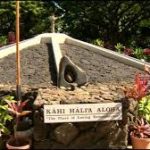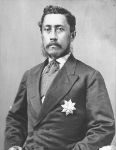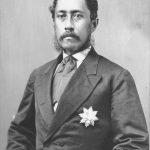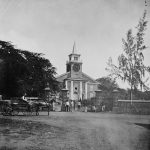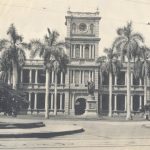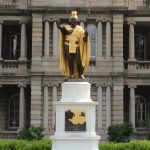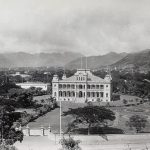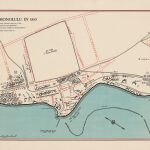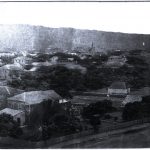
Cynthia Pong from NYC
Native Stories Traveling to Hawaii - ALOHA
Native Stories is born from Hawaii. If you are traveling here, we want to share some advice on how to make your stay in our home enjoyable.
Kawaiahaʻo Church
The church is a historic Congregational church located in Downtown Honolulu on the Hawaiian Island of Oʻahu. Download our walking tour to find out more.
Kawaiahaʻo Church is located at the corner of South King and Punchbowl streets across the street from the Hawaiian Mission Houses Historic Site and Archives, Kawaiahaʻo is “the oldest protestant mission church in Hawaiʻi.”
When the missionaries of the American Board of Commissioners for Foreign Missions arrived in 1820 they were granted land at Kawaiahaʻo to build homes. Theirs was the first large permanent settlement of foreigners in the islands. The first church was a thatched building measuring 54 X 22 Feet, with room enough to seat 300 people.
The idea to build a church for the mission came from the chief Kalanimoku, and after his death, his brother Boki took up the work which was strongly supported by the Kuhina Nui Kaʻahumanu. On July 31, 1838 the digging of the foundation for the church was begun, if you can imagine as many as a thousand people at a time would assemble on these grounds to dig to the bed rock, so that the church would be built on a solid, level foundation.
Kamehameha Statue Sunken
The statue was dedicated on the 14th of February 1883, and the ceremony commenced at noon, just two days after the coronation of King Kalākaua and his Queen Kapiʻolani. Though the statue of the great chief was commissioned by the government to commemorate the arrival of Captain James Cook, a hundred years prior, it was also clearly meant to support the mana of Kalākaua as Mōʻī by connecting him historically to the warrior chief, Kamehameha. That day amidst the throngs of people assembled for the grand event, the Hawaiian band stood ready to play, the military stood on either side of the new sculpture, a platform was erected at the eastern side of the statue for the King and many other dignitaries of state, including important foreign visitors to the islands, captains, and commanders of vessels. The seats arrayed facing the statue were filled by the Kingdomʻs Legislative Assembly. A heavy rain had fallen an hour before the ceremony but the skies cleared, and the weather reportedly remained great for the entirety of the event.
Listen to the Downtown Walking Tour to learn more.
Kamehameha Statue and Aliʻiōlani Hale
There is a saying that Aliʻiōlani Hale is one of the most photographed buildings in Hawaiʻi. The reason? It lies in the background of the often-photographed statue of Kamehameha I in downtown Honolulu. Despite the unintentional attention the structure draws, it continues to play an important role for Hawaiʻi judicial operations as the home of the Supreme Court of Hawaiʻi. Built between 1871 and 1874, Aliʻiōlani Hale stands upon a coral-block foundation and is built with rusticated concrete blocks, a relatively new building material at the time, resembling rough-hewn granite. Aliʻiōlani Hale, translated to “The House of the Heavenly Chiefs,” is named after Kamehameha V, Lot Kapuāiwa Kalanimakua Aliʻiōlani Kalani kupua paʻīlaninui. Designed by Australian architect Thomas Rowe, the building’s palatial features were designed in a Renaissance Revival style.
Listen to the Downtown Walking Tour to learn more.
ʻIolani Palace Grounds
In 1844, before the palace you see here was built, there was a one-story coral and wood structure named Hanailoia. This structure, built by former Oʻahu Governor Mataio Kekūanāoʻa for his daughter, Victoria Kamāmalu, was later named Hale Aliʻi by Kamehameha III. Victoria Kamāmalu was the sister of Alexander Liholiho (Kamehameha IV) and Lota Kapuāiwa (Kamehameha V). Kamehameha III, or Kauikeaouli, took this site in 1845 and made it his center of operations. Prior to this, the government had been centered in Lāhaina on the island of Maui. From 1845 on, the structure and site were known as Hale Aliʻi, and this solidified Honolulu as the capitol of Hawaiʻi. Prior to this, the seat of government would move as the ruler thought fit, and often depended upon maritime and economic activities of ships and trade. Kamehameha III held official events at Hale Aliʻi, but built himself a cottage he called Hoʻihoʻi Ke Ea on the grounds of Hale Aliʻi.
Listen to the Downtown Walking Tour to learn more.
William Charles Lunalilo
In a coral house on the grounds of ʻIolani Palace on January 31, 1835, William Charles Lunalilo was born to High Chiefess Miriam ʻAuhea Kekāuluohi and High Chief Charles Kanaʻina. His mother Kekāuluhoi was the niece of Kamehameha the Great, making Lunalilo Kamehameha’s grandnephew. At the time of Lunalilo’s birth, Kekāuluohi was the third highest-ranking chiefess to Kīnaʻu and Kekau ʻōnohi. Kekāuluohi would later succeed Kīnaʻu as kuhina nui, or premier, to rule with Kamehameha III.
Listen to the Downtown Walking Tour to learn more.



